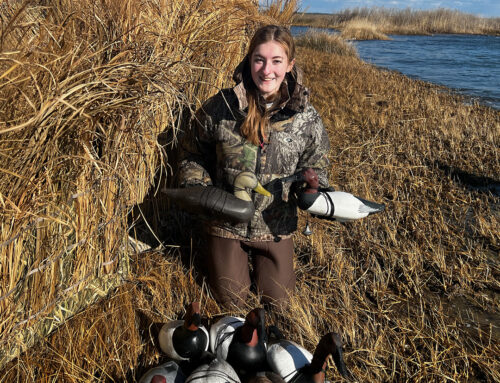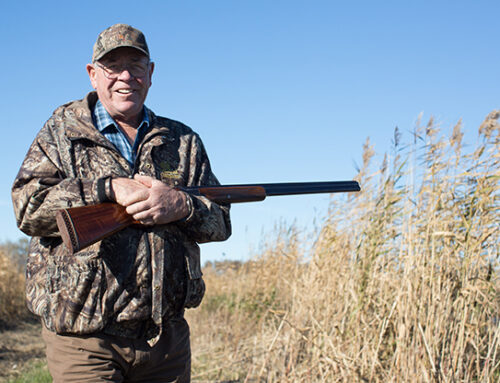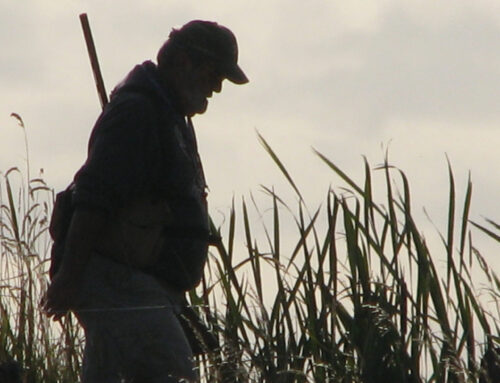The Take ’Em Moment

Duck chatter rains down through the oaks of our beaver pond, shattering the stillness of the crisp December morning. Long, squealing wingbeats reveal an unmistakable cause for elation — these are not the wood ducks or gadwalls we’ve been enjoying, but the year’s first sizeable collection of mallards.
As a greeting call is issued, even I hear the anxiety in my notes. Yet the ducks swing back into the wind, cup their flashing underwings and pitch down through the trees. Just as I pick out a pair of drakes, someone voices the greatest two words in all the sporting life:
“Take ’em!”
Take ’em. It’s a less-than-articulate phrase, but I suspect you can’t utter it to yourself without feeling something — without sensing a tingling surge of adrenaline to your gut or reliving canvasbacks pouring in so many seasons ago.
If you asked me why I pursue waterfowl, I’d probably note my fascination with the various waterfowl species, the dogs, the decoys, the sunrises, the history and so on. That’s an honest take, but a politically correct one.
Let’s be frank: It is the Take ’Em Moment — when mallards are backpedaling over the decoys — that we all live for.
The emotions felt in those precious seconds are unrivaled, and we seek to dwell in them as much as possible. That’s why our mounted ducks are so often depicted in cupped-and-committed fashion, even if their demise is owed to passing shots. A flying duck, however beautiful, does not speak to the duck hunter as one with outstretched wings. Waterfowl artists picked up on this long ago, and I assure you it’s not lost on magazine editors selecting cover photos.
The sentiment is timeless. Take the portrayals of hunting on the walls of prehistoric dwellings. Frequently the subject is presented with implement drawn, preparing to unleash at beast or fowl. I’m no anthropologist, but this suggests to me that even when hunting was about survival, its participants were captivated by the Take ’Em Moment. It is ingrained in us, I argue, a natural and healthy aspect of human instinct.
To be clear, the opportunity to shoot and, yes, to kill ducks is a component of the Take ’Em Moment, but it is not the overarching source of its thrill. It’s exceedingly more magical than that. We scout for opportune hunting areas and ensure not a decoy is out of place, and yet on the occasion that ducks hover over my decoys — no matter how many times it occurs — I’m equal parts elated and surprised. The ducks have traveled hundreds or even thousands of miles from Alberta, Saskatchewan, Manitoba or North Dakota, and they’ve selected my spread to descend upon. What are the odds?
Despite the ducks and geese having the advantages of vision and instinct, here we are: It’s a Take ’Em Moment. And I will cherish every second.






Leave A Comment